Durga Ashtami is the celebration of strength, hope, and destruction of evil. Hindu Lords Brahma, Vishnu, and Shiva created Maa Durga, and it is believed that Her soul came into being on the day of Shukla Paksha Ashtami. On Ashtami, Goddess Durga killed the evil demon Mahishasura to restore Dharma and peace.
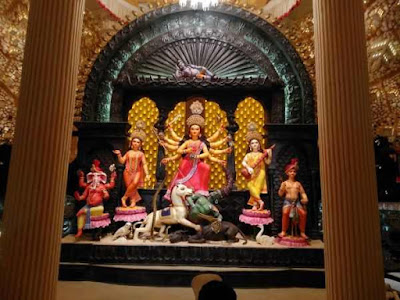
Chaitra Navratri usually falls during the Shukla paksha of the Hindu calendar month Chaitra (March or April).
Sharadiya Navratri is celebrated with great enthusiasm. A grand nine days festival is organized in Northern India at this time. Shardiya Navratri is also called the Akal Bodhan or the untimely invocation of Goddess Durga.
Devotees worship the nine incarnations of Goddess Durga during the Navratri. The Nava (nine) Durga are the symbols of the nine powers. These goddesses are the symbol of Brahmacharya, awareness, sacrifice, simplicity, knowledge, fearlessness, patience, and a sense of service.
On Ashtami day, devotees worship the eighth incarnation of Goddess Durga, Devi Mahagauri. Goddess Mahagauri fulfills all the desires of her devotees. Those who worship the Goddess get relief from all the sufferings in life.
Maha Ashtami
The most significant Durgashtami is Mahashtami that falls in the month of Ashwin(September and October overlap) during nine days of Shardiya Navratri festivities.
From the sixth to the tenth day of Shardiya Navaratri, the Durga Puja celebration is held in Bengal and the eastern part of India. Read how the Durga Puja celebration started in Bengal. In Gujrat, people get together during Shardiya Navarati to dance the Garba and wear colorful clothes.
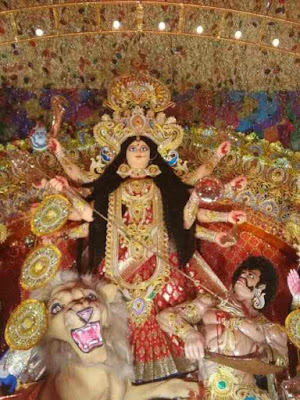 |
| Maa Durga |
The eighth day of Navratri or the third day of the Durga Puja celebration is known as Maha Ashtami or Durga Ashtami. It is the most auspicious day of Durga Puja. The day honors the power of Maa Durga, who killed the evil demon Mahishasura.
Durga Ashtami holds religious importance for the people in West Bengal and other eastern states of India. Durga Puja is the biggest festival of Bengalis. The huge idols of Goddess Durga are installed in pandals everywhere. On Ashtami morning, they observe fast and offer flowers(Pushpanjali) to Goddess Durga. Many Bengalis prefer to eat vegetarian food on Ashtami. In India, many people observe fast on this holy occasion.
Durga Ashtami date and time in 2021
Significance Of Durga Ashtami
Mythology states that the Goddess Chamunda appeared on this day from the forehead of Mother Durga and annihilated Chanda, Munda, and Rakthabija (the demons who were associates of Mahishasura).
Devotees worship the eight ferocious forms of Goddess Durga(Ashta Shakti) during the Durga Puja rituals on Mahashtami. On Maha Ashtami, eight small pots are installed to invoke Ashta Shaktis in them.
These eight goddesses, Brahmani, Maheswari, Kaumari, Vaishnavi, Varahi, Narasinghi, Indrani, and Chamunda, are incarnations of Shakti. They represent the powerful Divine Feminine.
Kumari Puja On Maha Ashtami
A tradition associated with Durga Ashtami originated in North India is to worship the girl child in the home. It is known as Kumari Puja. A group of five or seven young, unmarried girls is invited into the house to honor them.
There is a belief that each of these young girls represents the shakti (energy) of Durga on Earth. The group of girls is welcomed by washing their feet and then honored with chanting of mantras. After the rituals, the girls are fed sweets and food. Then, they are presented with red chunnis(a red scarf) and small gifts.
One of the many reasons why this festival is widely celebrated is to receive blessings of the Goddess to be granted wealth, prosperity, as well as knowledge.
Sandhi Puja
The most important ritual of Durga Puja, Sandhi Puja also falls on Maha Ashtami. The time window of the last 24 minutes of Ashtami Tithi and the first 24 minutes of Navami Tithi is known as Sandhi Time or the holy juncture during Durga Puja. Sandhi time is considered the most auspicious time during the whole Durga Puja. . 108 earthen lamps are lit during Sandhi Puja.
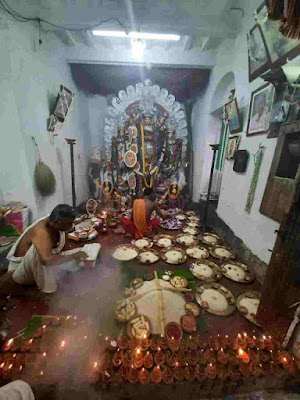 |
| Sandhi Puja |
It is customary to perform the sacrifice on Mahaasthami. Devotees perform symbolic Bali with vegetables like banana, cucumber, or pumpkin. Devotees generally perform the animal sacrifice on Maha Navami. Know all the Durga Puja rituals in detail.
Masik Asthami or Monthly Durgashtami
Masik Durga Ashtami is observed every month on the 8th day of the Shukla Paksha as per the Hindu calendar. Masik Durgashtami is also famous as Maas Durgashtami.
According to the Hindu rituals, Durga Ashtami is an important day dedicated to Goddess Durga.
Masik Durga Ashtami Rituals
According to the Hindu traditions, On this day, devotees offer flowers, Chandan (sandalwood paste), and dhoop, and worship her by chanting various Devi mantras.
Men and women both can do Durga Ashtami Puja. It is incomplete without reading the Durga Ashtami Vrat Katha and Durga Chalisa. Devotees observe the fast by consuming milk or fruits. Some abstain from eating or drinking all through the day. However, consumption of non-vegetarian food and alcohol is strictly prohibited.
Devotees also visit Shakti temples to offer their extended prayers and offerings. Devotees have faith that anyone who observes Durga Ashtami Vrat with dedication will be bestowed with happiness and good fortune in their lives.
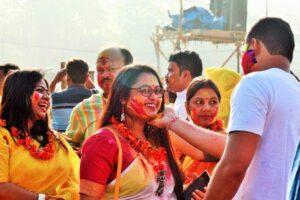
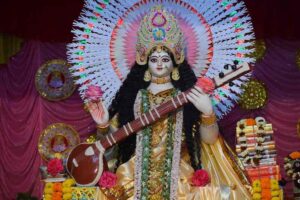
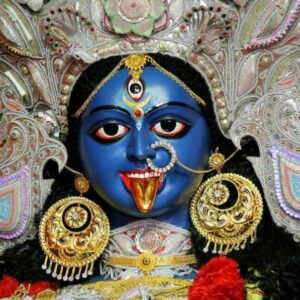
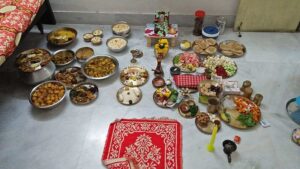
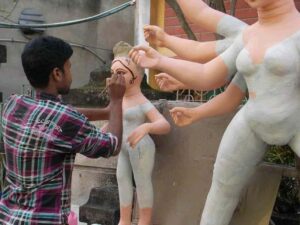
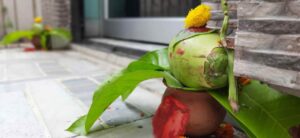
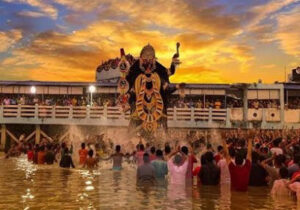




[…] all days during Durga Puja, the day of Durga Ashtami is considered the most auspicious to offer Anjali to Goddess Durga. On Dashami, mainly married women offer […]